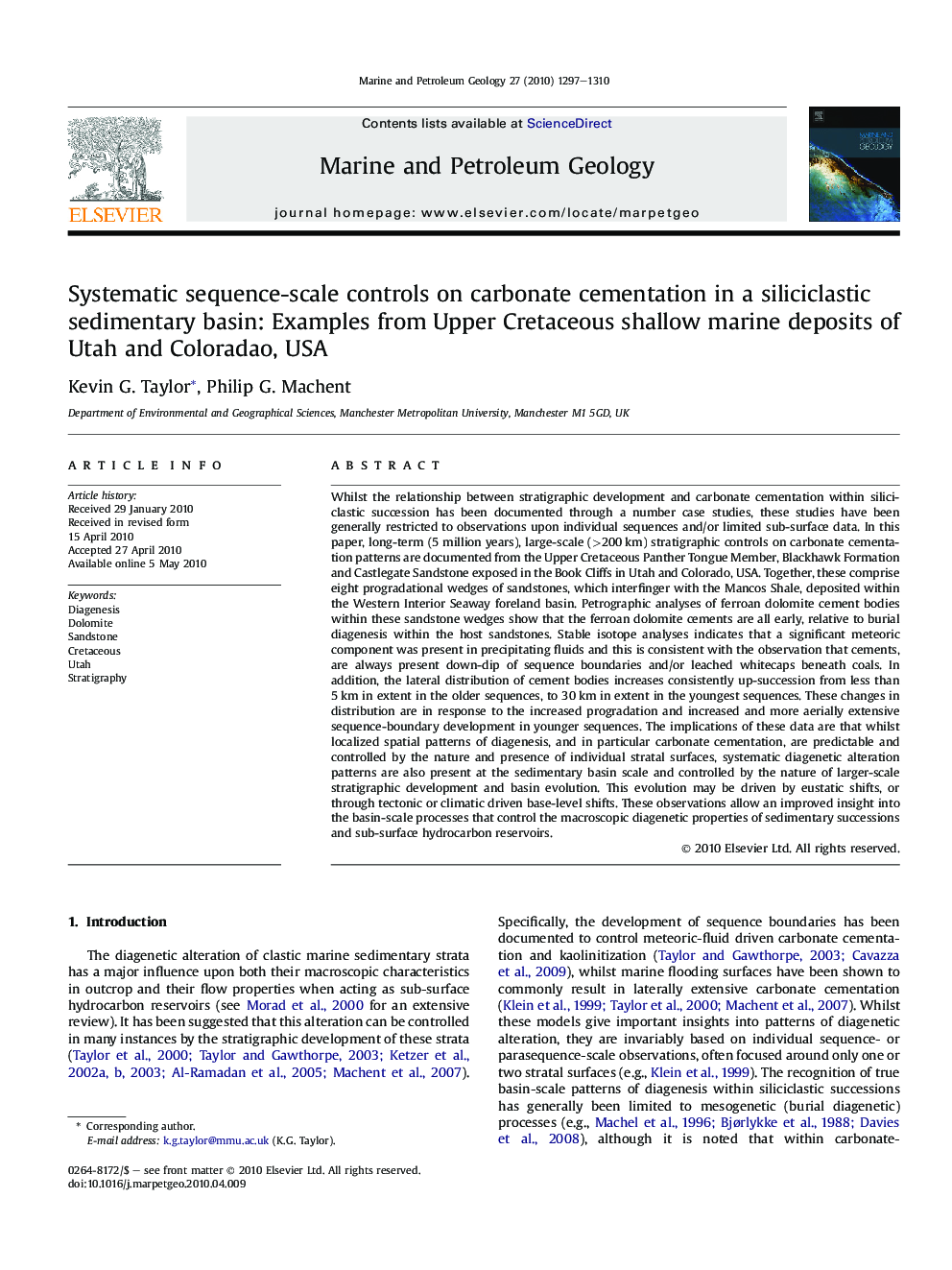| Article ID | Journal | Published Year | Pages | File Type |
|---|---|---|---|---|
| 4696206 | Marine and Petroleum Geology | 2010 | 14 Pages |
Whilst the relationship between stratigraphic development and carbonate cementation within siliciclastic succession has been documented through a number case studies, these studies have been generally restricted to observations upon individual sequences and/or limited sub-surface data. In this paper, long-term (5 million years), large-scale (>200 km) stratigraphic controls on carbonate cementation patterns are documented from the Upper Cretaceous Panther Tongue Member, Blackhawk Formation and Castlegate Sandstone exposed in the Book Cliffs in Utah and Colorado, USA. Together, these comprise eight progradational wedges of sandstones, which interfinger with the Mancos Shale, deposited within the Western Interior Seaway foreland basin. Petrographic analyses of ferroan dolomite cement bodies within these sandstone wedges show that the ferroan dolomite cements are all early, relative to burial diagenesis within the host sandstones. Stable isotope analyses indicates that a significant meteoric component was present in precipitating fluids and this is consistent with the observation that cements, are always present down-dip of sequence boundaries and/or leached whitecaps beneath coals. In addition, the lateral distribution of cement bodies increases consistently up-succession from less than 5 km in extent in the older sequences, to 30 km in extent in the youngest sequences. These changes in distribution are in response to the increased progradation and increased and more aerially extensive sequence-boundary development in younger sequences. The implications of these data are that whilst localized spatial patterns of diagenesis, and in particular carbonate cementation, are predictable and controlled by the nature and presence of individual stratal surfaces, systematic diagenetic alteration patterns are also present at the sedimentary basin scale and controlled by the nature of larger-scale stratigraphic development and basin evolution. This evolution may be driven by eustatic shifts, or through tectonic or climatic driven base-level shifts. These observations allow an improved insight into the basin-scale processes that control the macroscopic diagenetic properties of sedimentary successions and sub-surface hydrocarbon reservoirs.
